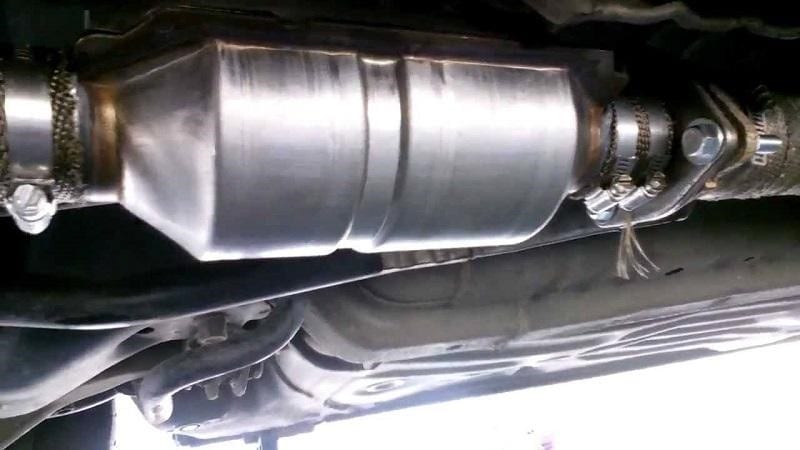
How does an automotive catalytic converter work?
Content
During operation of the internal combustion engine, exhaust gases are emitted into the atmosphere, which are not only one of the main causes of air pollution, but also one of the causes of many diseases.
These gases, which come from the exhaust systems of vehicles, are composed of extremely harmful elements, which is why modern cars are equipped with a special exhaust system, in which a catalyst is necessarily present.
The catalytic converter destroys harmful molecules of exhaust gases and makes them as safe as possible for people and the environment.
What is a catalyst?
The catalytic converter is a type of device whose main task is to reduce harmful emissions from exhaust gases of automobile engines. The catalyst device is simple. This is a metal tank that is installed in the exhaust system of a car.
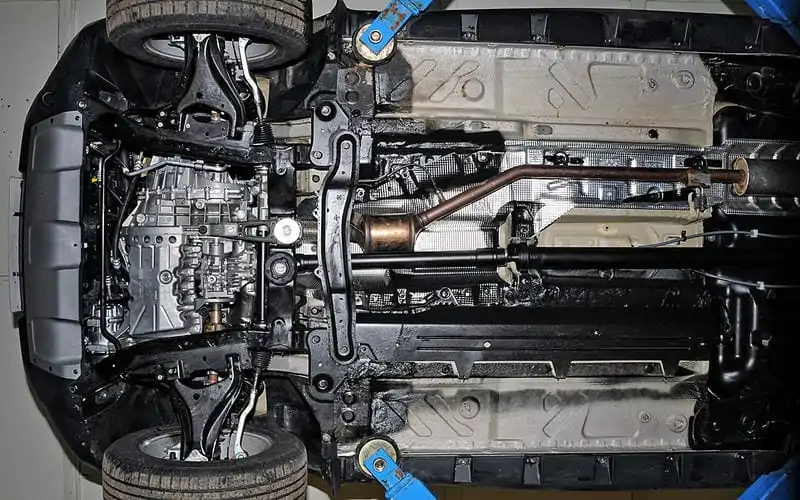
There are two pipes in the tank. The “input” of the converter is connected to the engine, and exhaust gases flow through it, and the “output” is connected to the resonator of the exhaust system of the car.
When engine exhaust enters the catalyst, chemical reactions occur in it. They destroy harmful gases and turn them into safe ones that can be released into the environment.
What elements does the catalytic converter consist of?
In order to make it a little clearer how an automobile catalytic converter works, let us consider what its main elements are. Without going into details, we list only the main elements of which it is built.
Substrate
The substrate is the internal structure of the catalyst onto which the catalyst and precious metals are coated. There are several types of substrates. Their main difference is the material from which it is made. Most often it is an inert substance that stabilizes active particles on its surface.
Покрытие
The active catalyst material usually consists of alumina and compounds such as cerium, zirconium, nickel, barium, lanthanum and others. The purpose of the coating is to expand the physical surface of the substrate and serve as a base onto which the precious metals are deposited.
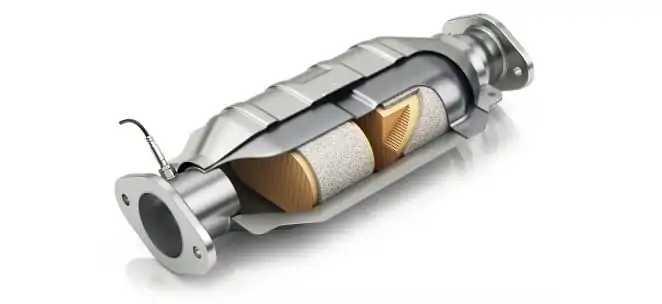
Precious metals
The precious metals present in the catalytic converter serve to carry out an extremely important catalytic reaction. Commonly used precious metals are platinum, palladium and rhodium, but in recent years a large number of manufacturers have begun to use gold.
Chassis
The housing is the outer shell of the device and contains the substrate and other elements of the catalyst. The material from which the case is usually made is stainless steel.
Pipes
Pipes connect the vehicle’s catalytic converter to the vehicle’s exhaust system and engine. They are made of stainless steel.
How does an automotive catalytic converter work?
For the operation of the internal combustion engine, it is important that a stable combustion process of the air-fuel mixture takes place in its cylinders. During this process, harmful gases are formed, such as carbon monoxide, nitrogen oxides, hydrocarbons and others.
If the car does not have a catalytic converter, all these extremely harmful gases, after being emitted into the exhaust manifold from the engine, will pass through the exhaust system and will directly enter the air we breathe.
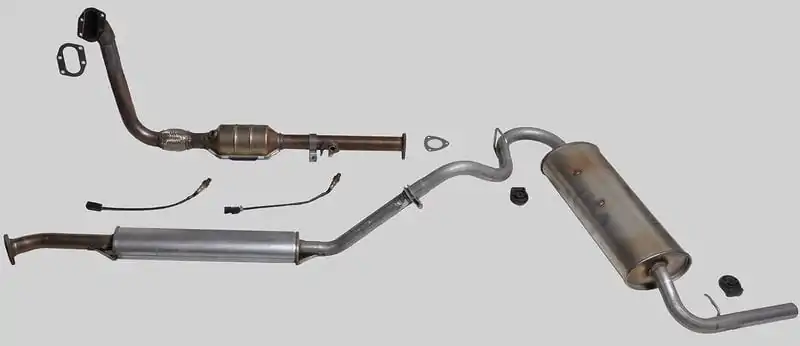
If the vehicle has a catalytic converter, exhaust gases will pass from the engine to the muffler through the honeycomb of the substrate and react with precious metals. As a result of a chemical reaction, harmful substances are neutralized, and only a harmless exhaust, consisting mainly of carbon dioxide, enters the environment from the exhaust system.
We know from chemistry lessons that a catalyst is a substance that causes or speeds up a chemical reaction without affecting it. Catalysts participate in reactions but are neither reactants nor products of a catalytic reaction.
There are two stages through which harmful gases pass in the catalyst: reduction and oxidation. How it works?
When the operating temperature of the catalyst reaches from 500 to 1200 degrees Fahrenheit or 250-300 degrees Celsius, two things happen: reduction, and immediately after that the oxidation reaction. This sounds a little complicated, but in fact it means that the molecules of the substance simultaneously lose and receive electrons, which is why their structure changes.
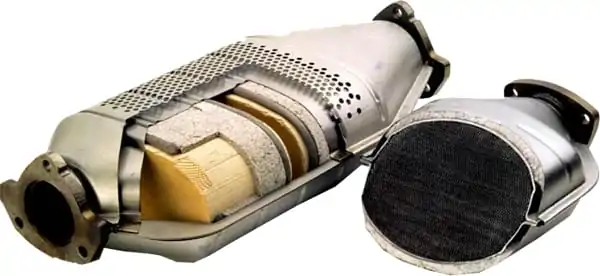
The reduction (oxygen uptake) that occurs in the catalyst is aimed at converting nitric oxide into an environmentally friendly gas.
How does the automotive catalyst work in the recovery phase?
When nitrous oxide from the car’s exhaust gas enters the catalyst, platinum and rhodium in it begin to act on the decomposition of nitric oxide molecules, turning the harmful gas into completely harmless.
What happens at the oxidation stage?
The second stage, which takes place in the catalyst, is called an oxidation reaction in which unburned hydrocarbons are converted to carbon dioxide and water by mixing with oxygen (oxidation).
The reactions that occur in the catalyst change the chemical composition of the exhaust gases, changing the structure of the atom of which they are composed. When molecules of harmful gases pass from the engine to the catalyst, it separates them into atoms. Atoms, in turn, recombine into molecules into relatively harmless substances such as carbon dioxide, nitrogen and water, and are released into the environment through an exhaust system.
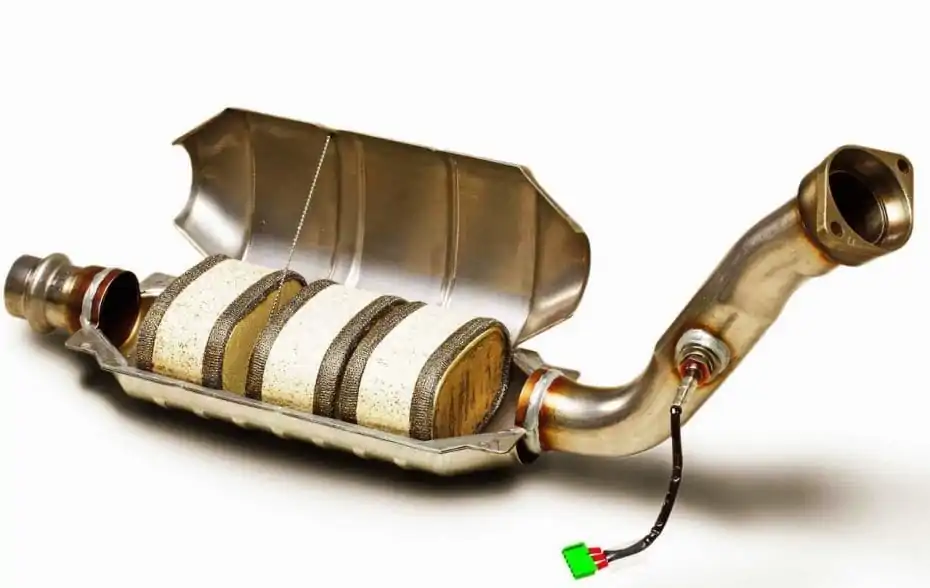
The main types of catalytic converters used in gasoline engines are two: two-way and three-way.
Bilateral
The double-walled (double-sided) catalyst simultaneously performs two tasks: oxidizes carbon monoxide to carbon dioxide and oxidizes hydrocarbons (unburned or partially burned fuel) to carbon dioxide and water.
This type of automotive catalyst was used in diesel and gasoline engines to reduce the harmful emissions of hydrocarbons and carbon monoxide until 1981, but since it could not convert nitrogen oxides, after 81 years it was replaced with three-way catalysts.
Three-way redox catalytic converter
This type of automotive catalyst, as it turned out, was introduced in 1981, and today it is installed on all modern cars. The three-way catalyst performs three tasks simultaneously:
- restores nitric oxide to nitrogen and oxygen;
- oxidizes carbon monoxide to carbon dioxide;
- oxidizes unburned hydrocarbons to carbon dioxide and water.
Because this type of catalytic converter performs both the reduction and oxidation steps of catalysis, it performs its task with up to 98% efficiency. This means that if your car is equipped with such a catalytic converter, it will not pollute the environment with harmful emissions.
Types of Catalysts in Diesel Engines
For diesel vehicles, until recently, one of the most commonly used catalytic converters was the diesel oxidation catalyst (DOC). This catalyst uses oxygen in the exhaust stream to convert carbon monoxide to carbon dioxide and hydrocarbons to water and carbon dioxide. Unfortunately, this type of catalyst is only 90% effective, and it manages to eliminate the smell of diesel and reduce visible particles, but it is not effective in reducing NO x emissions.
Diesel engines emit gases that contain a relatively high level of particulate matter (soot), which consists mainly of elemental carbon, which DOC catalysts cannot handle, so the particles must be removed using so-called particulate filters (DPF).
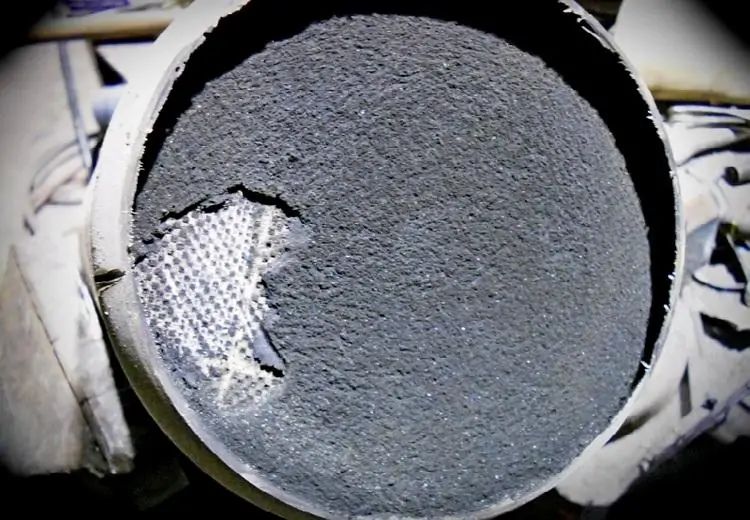
How are catalysts serviced?
To avoid problems with the catalyst, it is important to know that:
- The average catalyst life is about 160000 km. Having traveled this distance, you need to think about replacing the converter.
- If the vehicle is equipped with a catalytic converter, you should not use leaded fuel, as it reduces the effectiveness of the catalyst. The only suitable fuel in this case is unleaded.
Undoubtedly, the environmental and health benefits of these devices are enormous, but in addition to their advantages, they also have their drawbacks.
One of their biggest drawbacks is that they only work at high temperatures. In other words, when you start the car, the catalytic converter does almost nothing to reduce exhaust emissions.
It starts to work efficiently only after the exhaust gases are heated to 250-300 degrees Celsius. That is why some car manufacturers have taken steps to solve this problem by moving the catalyst closer to the engine, which, on the one hand, improves the performance of the device, but shortens its service life, because its proximity to the engine exposes it to very high temperatures.
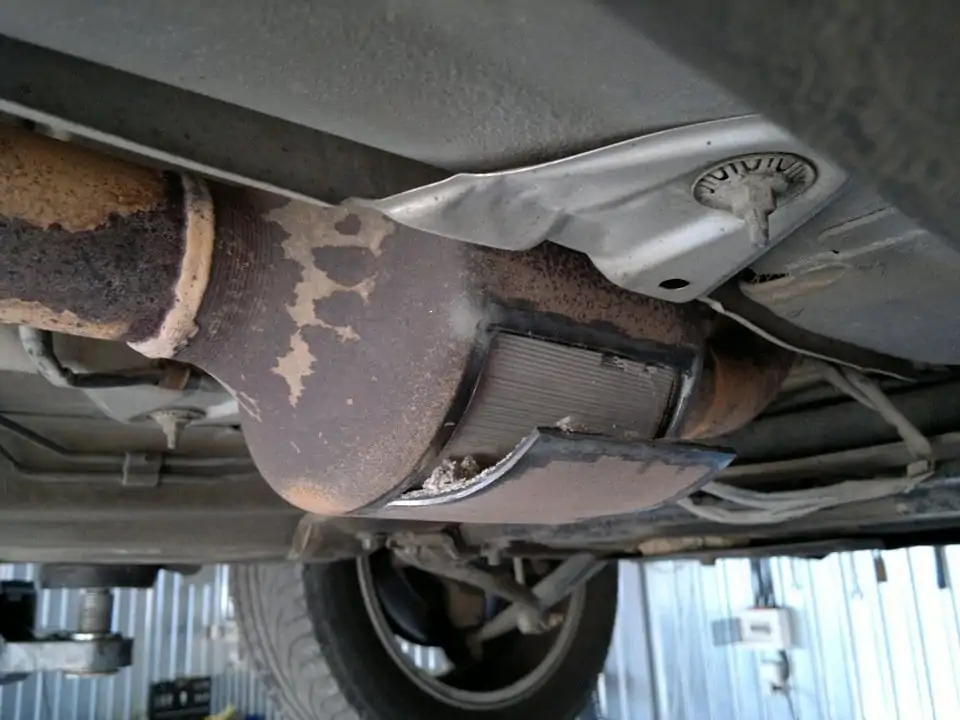
In recent years, it was decided to place the catalytic converter under the passenger seat at a distance that will allow him to work more efficiently without being exposed to high engine temperatures.
Other disadvantages of catalysts are frequent clogging and cake burning. Burnout usually occurs due to unburned fuel entering the exhaust system that is ignited in the catalytic converter feed. Clogging most often occurs due to poor or unsuitable gasoline, normal wear and tear, driving style, etc.
These are very minor flaws amid the tremendous benefits we get from using automotive catalysts. Thanks to these devices, harmful emissions from automobiles are limited.
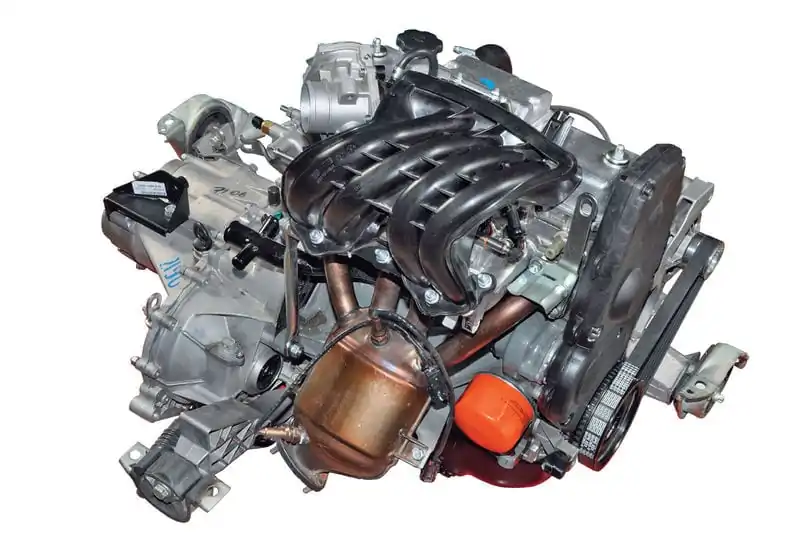
Some critics argue that carbon dioxide is also a harmful emission. They believe that a catalyst is not needed in a car, because such emissions increase the greenhouse effect. In fact, if a car does not have a catalytic converter and emits carbon monoxide into the air, this oxide will itself turn into carbon dioxide in the atmosphere.
Who invented the catalyst?
Although catalysts did not appear massively until the late 1970s, their history began much earlier.
The father of the catalyst is considered to be the French chemical engineer Eugene Goudry, who in 1954 patented his invention under the name "Exhaust Catalytic Converter".
Prior to this invention, Goodry invented catalytic cracking, in which large complex organic chemicals are separated into harmless products. Then he experimented with various types of fuel, his goal was to make it cleaner.
The actual use of catalysts in automobiles took place in the mid-1970s, when stricter emission control rules were introduced, requiring the removal of lead from the exhaust due to low-quality gasoline.
Questions and answers:
How to check the presence of a catalyst on a car? To do this, just look under the car. In addition to the main muffler and the small muffler (the resonator that sits in front of the exhaust system), the catalyst is another bulb.
Where is the catalyst in the car? Since the catalyst must operate in high temperature conditions, it is located as close to the exhaust manifold as possible. It is in front of the resonator.
What is a catalyst in a car? This is a catalytic converter - an additional bulb in the exhaust system. It is filled with ceramic material, the honeycomb of which is covered with precious metal.


3 comment
Mark
Thanks for such an informative and helpful article! Many noble metals are found in catalysts. That is why there have been many thefts recently. Many do not know about it. And if the catalyst cannot be cleaned, it must be replaced. You can really sell the old one and get money from it. Here I found buyers for my catalytic converter
Badr
Thank you
Kim
How about describing the pictures?
Now I actually know that there is also a filter in the exhausts - and you also show pictures of it, but what about arrows and show in and out with arrows